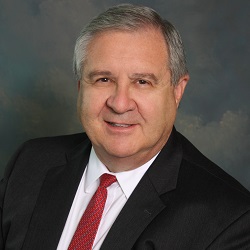Top-Level Takeaways
-
Local branches play a role in lending at State Employees’ Credit Union, where branch employee make decisions and deliver the news personally.
-
Counteroffers and education can put members in a better financial situation over time.
Demand for lending services has never been higher. Aggregated credit union loan balances at U.S. credit unions surpassed $1 trillion at year-end 2018 for the first time ever. First mortgages and auto loans make up the lion’s share of loan portfolios, which grew $88.9 billion in 2018 alone.
But as lending is on the rise, so, too, are denials. According to mortgage disclosure data, nearly one in three applicants with less-than-perfect credit will be denied.
The way credit unions deliver the bad news can deepen relationships with members or drive them away. Saying no with a plan to get to yescan actually put borrowers on the path to solid financial footing, as these lending executives have learned.
1. Relay A Rapid Response
CU QUICK FACTS
Randolph-Brooks FCU
Data as of 12.31.18
HQ: Universal City, TX
ASSETS: $9.3B
MEMBERS: 800,748
BRANCHES: 59
12-MO SHARE GROWTH: 8.9%
12-MO LOAN GROWTH: 8.9%
ROA: 1.19%
The longer members wait for a lending decision, the more likely are they to be frustrated with the credit union. Members know online applications for credit cards can be approved within minutes, and they expect that kind of service from their credit union.
Randolph-Brooks Federal Credit Union ($9.3B, Universal City, TX) automates approximately 45% of the decisioning process for consumer loans, which enables the credit union to set fast turnaround goals. For example, for in-person or video chat interactions, the credit union offers immediate answers. Online or call center loan applicants receive a call from a trained outbound team.
We strive for a decision in under 10 minutes, but we are conscious that some reviews require more time, says Heather Sullivan, senior vice president of consumer lending at Randolph-Brooks FCU, which reported a 12-month loan growth rate of 8.8% and a return on assets (ROA) of 1.19% in the fourth quarter of 2018.We have a process in place for secondary review of denials and for members to request a secondary review.
2. Keep Lending Local
CU QUICK FACTS
State Employees Credit Union
Data as of 12.31.18
HQ: Raleigh, NC
ASSETS: $38.8B
MEMBERS: 2.37M
BRANCHES: 269
12-MO SHARE GROWTH: 3.6%
12-MO LOAN GROWTH: 6.1%
ROA: 0.75%
Some credit unions have centralized loan processing and decisioning to optimize resources and improve consistency, but local branches can still play a role in lending. State Employees Credit Union ($38.8B, Raleigh, NC) has 2,200 employees with lending authority across 269 branches and member service centers.
Whenever possible, a branch employee makes those decisions and delivers the news in the branch or through a telephone.
We don’t ever want to send them a cold denial letter in the mail,says Jerry Harmon, chief lending officer at the credit union.
The folks who live in these communities and know these members are the best people to make the decision, Harmon continues. We want members to have the opportunity to tell their story, and a lot of times that story makes a difference in whether we can approve a loan.
SECU’s lending line of business, which grew 6.1% from year-end 2017 to year-end 2018 on an ROA of 0.75%, reviews every local loan decision within 24 hours. In an estimated 2% of cases, the team finds inadvertent errors that can change a no decision to a yes.
We are all human, Harmon says. The member can enter something wrong, or we can calculate something wrong. Also, from a fair lending standpoint, since we have 2,200 lenders, we want to make sure we’re being consistent with decisions around the state.
3. Explore Potential Counteroffers

Heather Sullivan, Senior Vice President Of Consumer Lending, Randolph-Brooks FCU
Financial education is a part of nearly every credit union’s brand. Lending officers often have the first and best opportunity to educate members on what they can afford, even when that means choosing a less-expensive vehicle or a smaller house.
We have many member stories that showcase how counteroffers have put them in a better place to be financially responsible over time, Sullivan says.
Whenever feasible, adds Harmon, lenders should explore ways to turn a no into a yes.
We don’t want to tell a member no, but once and a while it’s the best thing for them and for us, Harmon says. We don’t want them to think they can never get a loan. We want to tell them what they need to do to get a loan.
4. Formalize An Appeals Process

Jerry Harmon, Chief Lending Officer, State Employees Credit Union
The willingness to go the extra mile for members is one thing that separates credit unions from banks. Borrowers who disagree with a loan decision have been known to take their case to a vice president or senior vice president. SECU formalized the escalation process by creating local loan review committees that can overturn loan denials.
These committees are made up of advisory board members from different areas of the state, Harmon says. They are their peers, folks who live in the community, have jobs in the community. A member-owner can submit an appeal in writing or they can appear in person. This is another opportunity for them to tell their story.
5. Offer Counselling And A Turnaround Plan
Many credit unions these days offer financial counselling in the wake of a loan denial. RBFCU offers online services and tools from GreenPath Financial Wellness that support budgeting, debt repayment, credit score improvement, bankruptcy avoidance, and more.
We are sensitive to saying no’ and work to educate the member on how they can improve their situation to get to a yes, Sullivan adds.
Across the country, SECU provides in-house financial counselling resources as well as a plan for remediation of bad credit, debt consolidation, and budgeting goals.
When we have to deny a member, we tell them the reason but also what they need to do to get a loan, Harmon says.
The credit union documents the plan at the time of denial, so when the borrower comes back later, any lender on staff can consider it for a new request.
If the borrower has done everything we asked, we should make that loan, Harmon says.
For some members, a loan denial can be a wake-up call. In the fourth quarter of 2018, RBFCU denied a loan to a member who then reached out in 2019 to explain how the federal government shutdown helped him realize how quickly his finances could go south.
He is working toward building his savings and paying down debt so he will be more prepared for unexpected events, Sullivan says.
Looking ahead, lending services teams must balance the personal touch for which credit unions are known with the speed and accuracy members expect, all while juggling requests that come through branch, mail, telephone, and online app.
Get ready to serve members however they want to get to us, Harmon says. The challenge lies in serving every entry point with the best service possible.